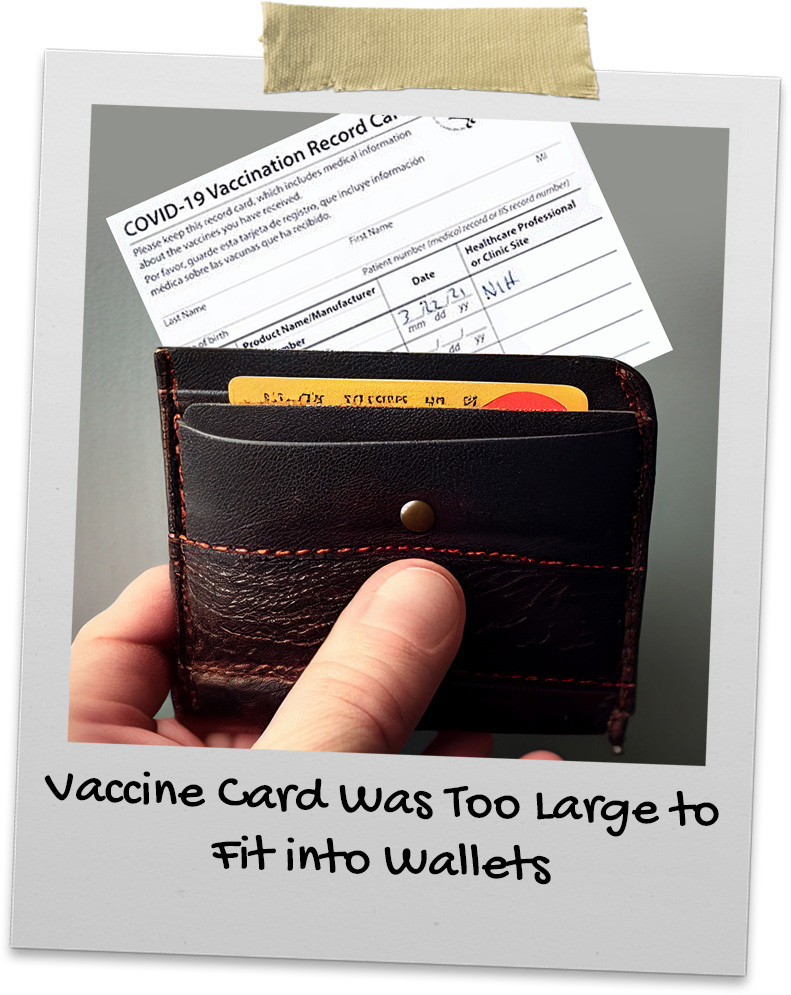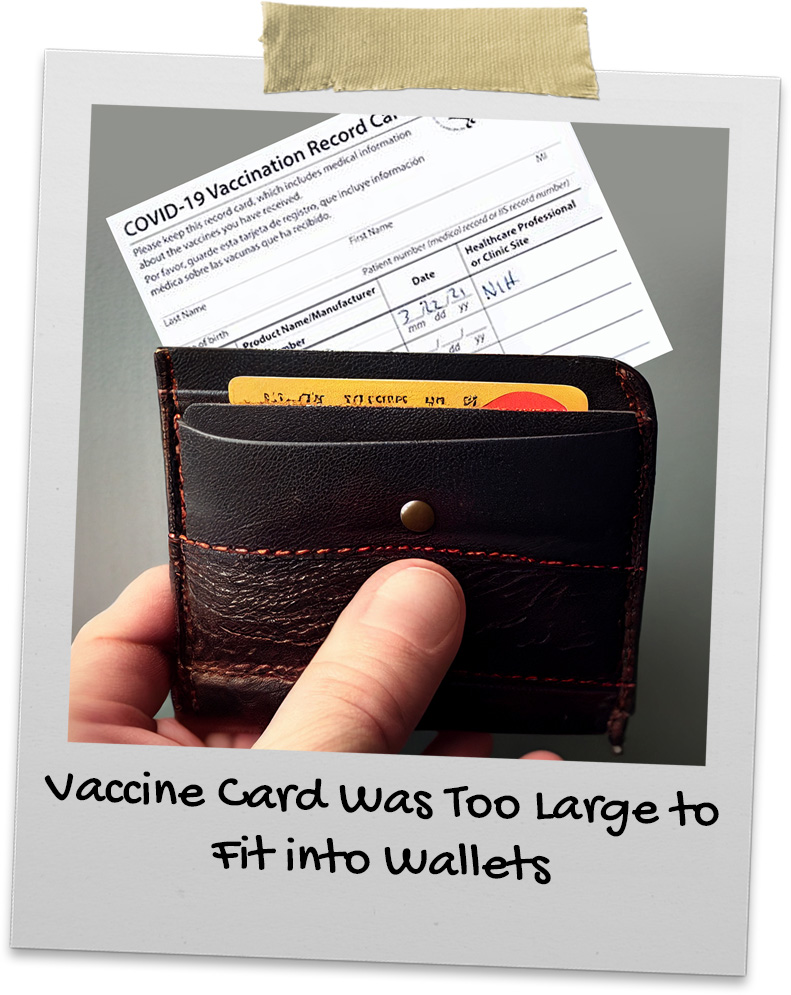Vaccine Card Was Too Large to Fit into Wallets


Almost as soon as the COVID-19 virus was detected, the world’s smartest vaccine researchers began working on the vaccine to stop the spread and eliminate the side effects of the disease. Operation Warp Speed (OWS) was announced May 15, 2020. It was a $10 billion public–private partnership initiated by the United States government to facilitate and accelerate the development, manufacturing, and distribution of COVID-19 vaccines.
The program promoted mass production of multiple vaccines, and different types of vaccine technologies. As soon as clinical trials confirmed one or more of the vaccines were successful, it would allow for super-fast distribution of the vaccines. By November 9, a phase 3 study showed one of the vaccines was over 90% effective in preventing COVID-19. It was time to get it to the people.
The first vaccine became available for individuals 16 years of age and older on December 11. The idea was getting one shot would be a start, and a second shot would increase the effects of the vaccine, and perhaps even more booster shots to shore up the effectiveness, depending on how the disease and variants evolved.
Meanwhile, in the ramp-up to deliver the vaccines, the CDC oversaw producing a method to track who had a vaccination and a way to quickly prove it, if need be. Enter the vaccination card. The card was supposed to be available to everyone to have and keep track of their own shots and side effects they experienced.
However, many people found that the vaccine cards were quite large, making them difficult to carry around in a purse or wallet. People would have to either fold them or carry them loosely in their pockets.
This inconvenience caused some individuals worry about losing the card, or not carrying them when it was required to present them.
Why didn’t they make the cards the size of a traditional ID card or a credit card, that would universally fit in any wallet? Eventually, the proof of vaccine went digital and ended up on people’s phones, and it became less and less important to carry with you. The lesson was, the CDC does a lot of things well, but don’t put them in charge of designing a piece of print material.



